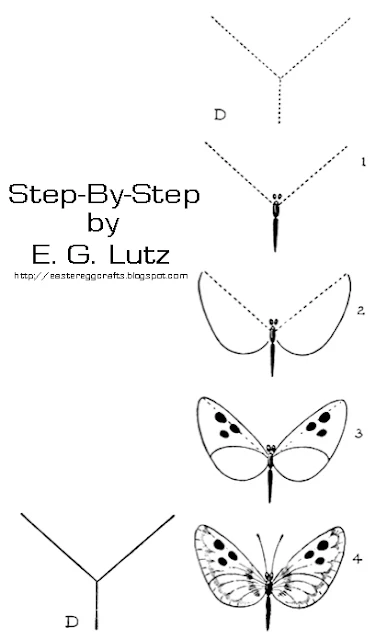An unfortunate tendency in the use of certain materials that are particularly adaptable to the primary grades, is that of students and even teachers thinking that higher grades or mature work requires advanced materials. If wax crayons are used by the first grades or if a box of watercolors with only four colors are used in the primary grades, the pupil thinks it a mark of progress if the upper grades allow chalk crayons and watercolors of greater variety; and therefore will not use materials related to beginners.
 |
| With wax crayons it is possible to sketch with simple equipment, producing a sketch that will not rub off. Sample Alpine Church by Pedro Lemos. |
This attitude should be discouraged, for after all materials have little to do with real production if the student studies correctly. One great artist said that he would use mud if it gave him the right color in painting. This may be also remembered by those educators who insist that pupils should not mix mediums. Just why some teachers should hold up their hands in horror over a problem that suggests the use of crayon and cut paper or crayon and watercolor has never been satisfactorily explained. We do know that artists from the time of the great masters to this date have used crayon and watercolor, oil-paint and gesso, pencil and watercolor, pen and ink and wash, etc. So why teach today in our schools that which the student tomorrow finds to be untrue in professional practice.
I believe that a great many delightful possibilities remain to be discovered and developed in the use of the wax crayon and those crayons that are partly wax; and that these possibilities can be found by any teacher or artist that will use them in their work. To prove this to myself satisfactorily I gave a box of eight wax crayons to a well known landscape artist and asked him to see what he could do with them. Not only were his results very good but he became so interested in the results that he has used them ever since. This same artist, by the way, produces all of his fine watercolor paintings with only six colors in his box. Two yellows, two reds and two blues. His yellows are Gamboge and Chrome Yellow, his blues are Prussian Blue and Cobalt, his reds are Crimson Lake and Indian Red.
If we can secure greater possibilities with fewer materials our whole art education will be more productive as we reach points where more materials are available. It may be a strange statement, but nevertheless the work we receive at the office from the lower grades is of a much better standard than that received from the advanced grades, and I believe that it is the result of working with fewer materials and within limitations. Too many things to work with, too many values, too many lines, result in too much detail and over-done results.
With the use of wax crayons we have a material that is inexpensive, is easily carried for sketching, does not rub and therefore is fairly permanent, and with varying papers and renderings allows for many variations.
Every material has a corresponding working surface to which it should be applied to secure best results. A rough or irregular surfaced paper is best for wax crayons. A smooth paper is not good for wax crayon as the crayon refuses to mark well and will not receive additional marks. The ordinary rough manila paper or rough white drawing paper is good. Light stroking of the crayon on the paper will result in the color being received on the surfaces of the rough projections of the paper surface. A second color pressed more firmly will color the lower portions of the paper and a vibrating quality of color is secured which can produce very pleasing effects.
In some instances the scraping of parts of the subject or the indicating of detail by scraping with a knife point produces good results.
This effect may be seen on the windmill of the color plate. An under color may be revealed by this method which will give an effect even more interesting than where there is no under color. In the use of very rough paper a sky quality of surface texture can be enhanced by spotting the open portions of the paper surface or remaining uncovered spots with a complementary or analogous color to the color first used.
The accompanying illustrations show the same subject sketched with different strokes and the results are well worth studying. A pad of rough sketching paper and a little or large box of wax crayons tucked into the vacation baggage this summer may yield a new avenue or opportunity for sketching. Why wait until a large, cumbersome box of paints and sketching paraphernalia be acquired?
The thrill of sketching is possible and good results, too, with the oft derided primary wax crayons. And the demand for these crayons has resulted in manufacturers producing them in varying palettes so that a considerable range of hues may be secured. But after all simplicity is the keynote to success with crayons, simple subjects, simple masses, simple colors and restful and satisfactory In the use of very rough paper a sky results will come.
The works of God are fair for naught
Unless our eyes in seeing,
See hidden in the thing the thought
Which animates its being.
Whoever yearns to see aright
Because his heart is tender,
Shall catch a glimpse of heavenly light
In every earthly splendor.
-Wilhelmina Seegmiller
















